Dyneema slings on trees - the evolution of raed slacklines TreePRO
Some months ago we introduced TreePRO to the awesome slackline community. TreePRO is some kind of new school tree protection that allows you to use Dyneema whoopie slings as anchor slings on trees, as shown in our famous PRO Longline Set for example.
We recieved tons of feedback about the TreePRO concept. The feedback included many suggestions on how to further improve the protection of trees. So we tried lots of smaller and bigger changes on the design. In tis article we want to show the state of the evolution of TreePRO and highlight the PROs and CONs of the designs.
DESIGN 1
The first design was quite simple. We took some Cordura nylon, folded it in half, some pocket seams were sewn in and the carbon plates were put in.
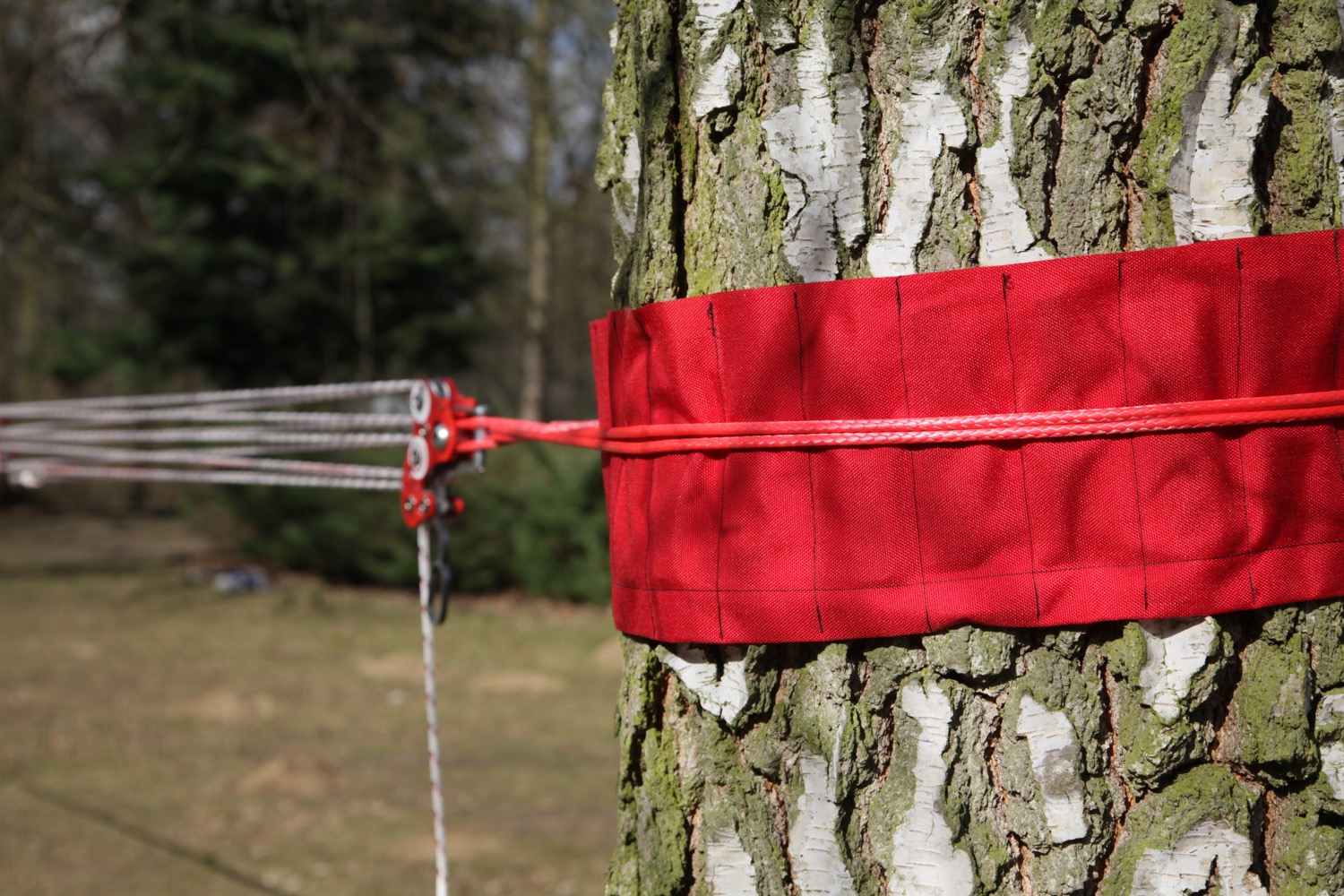
PROs: easy to produce, lightweight, needs only Cordura and carbon fibre plates,
CONs: no possibility to fix it to the tree during setup, the anchor sling can not be fixed to prevent abrasion, the carbon plates have 'unprotected' space in between, where traces can occure under circumstances of very rough bark, no soft padding of the carbon plates against the bark
DESIGN 2
The second design was a unique prototype that became deprecated quickly
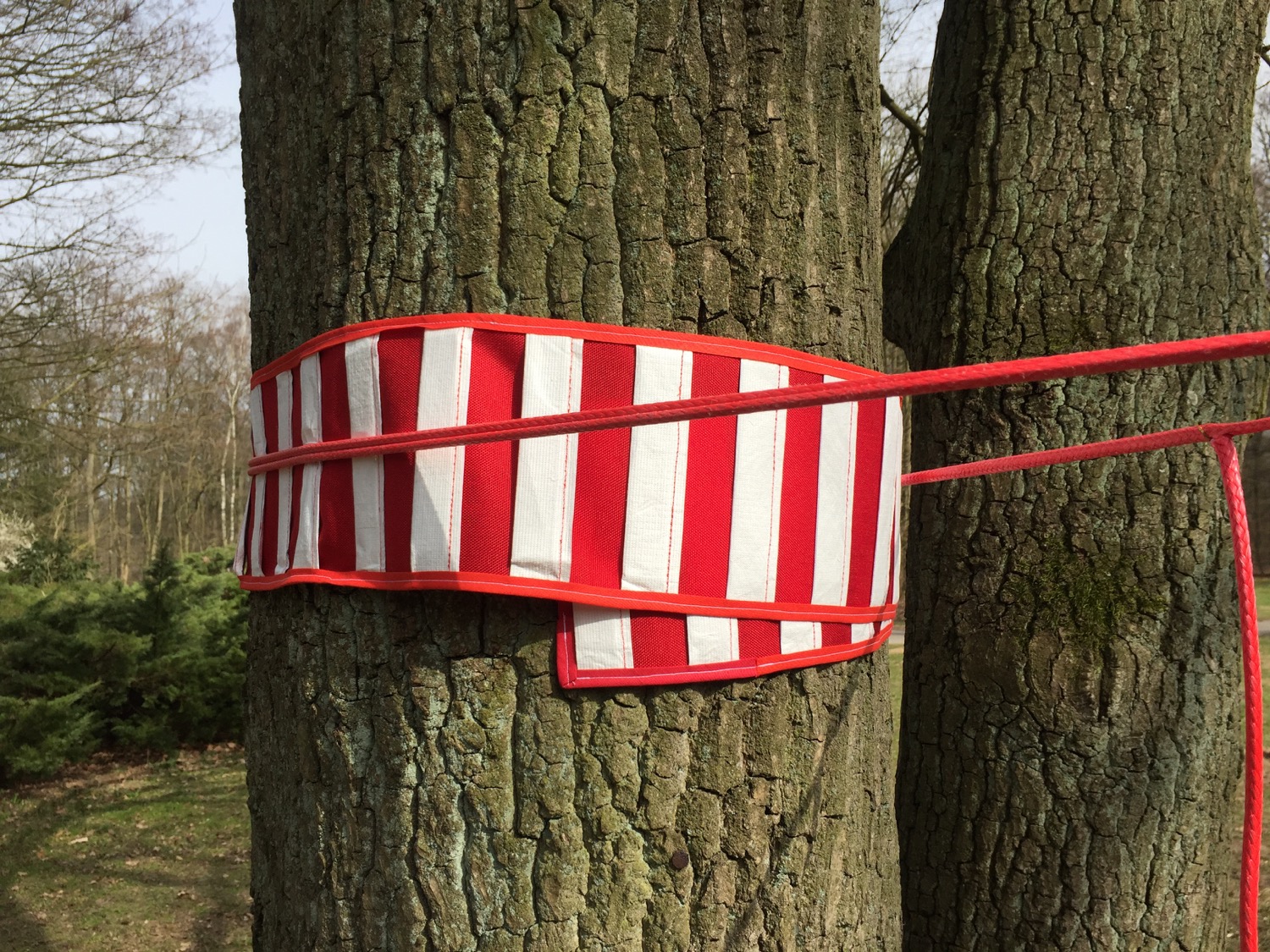
PROs: nice look
CONs: all of design 1, harder to produce, not robust enough
DESIGN 3
Design 3 tried to avoid many of the CONs of design 1. We added some very flexible but robust memory foam with cordura cover as base layer, the red cordura was sewn onto this base layer to create the pockets. Velcro patches were attached to the red Cordura. The velcros should create the ability to fix TreePRO to the tree and to fix the anchor sling to TreePRO.
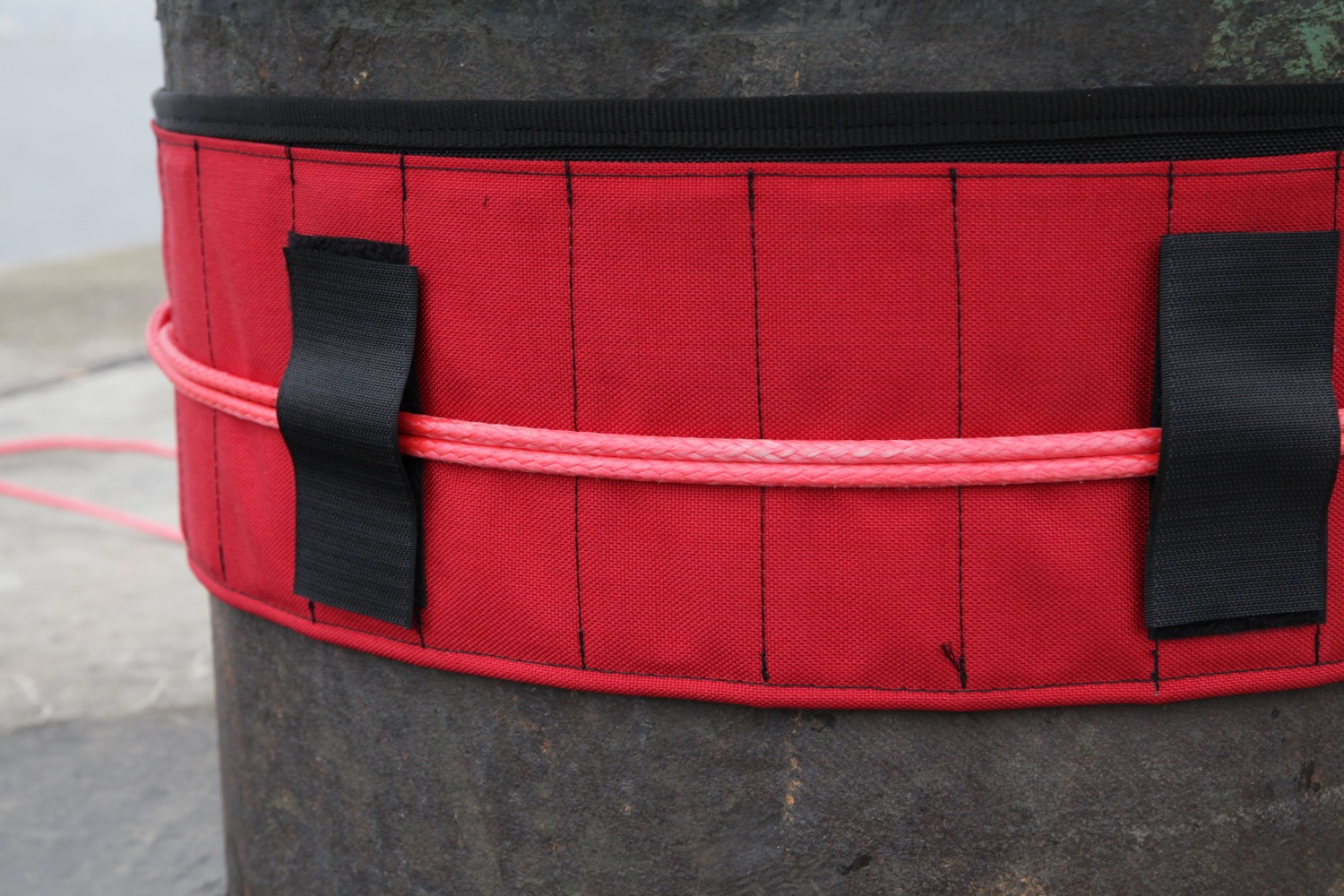
Have a closer look at the sandwich structure of this design. A base layer of Cordura, memory foam and Cordura again, carbon plates in the middle and Cordura on the outside:
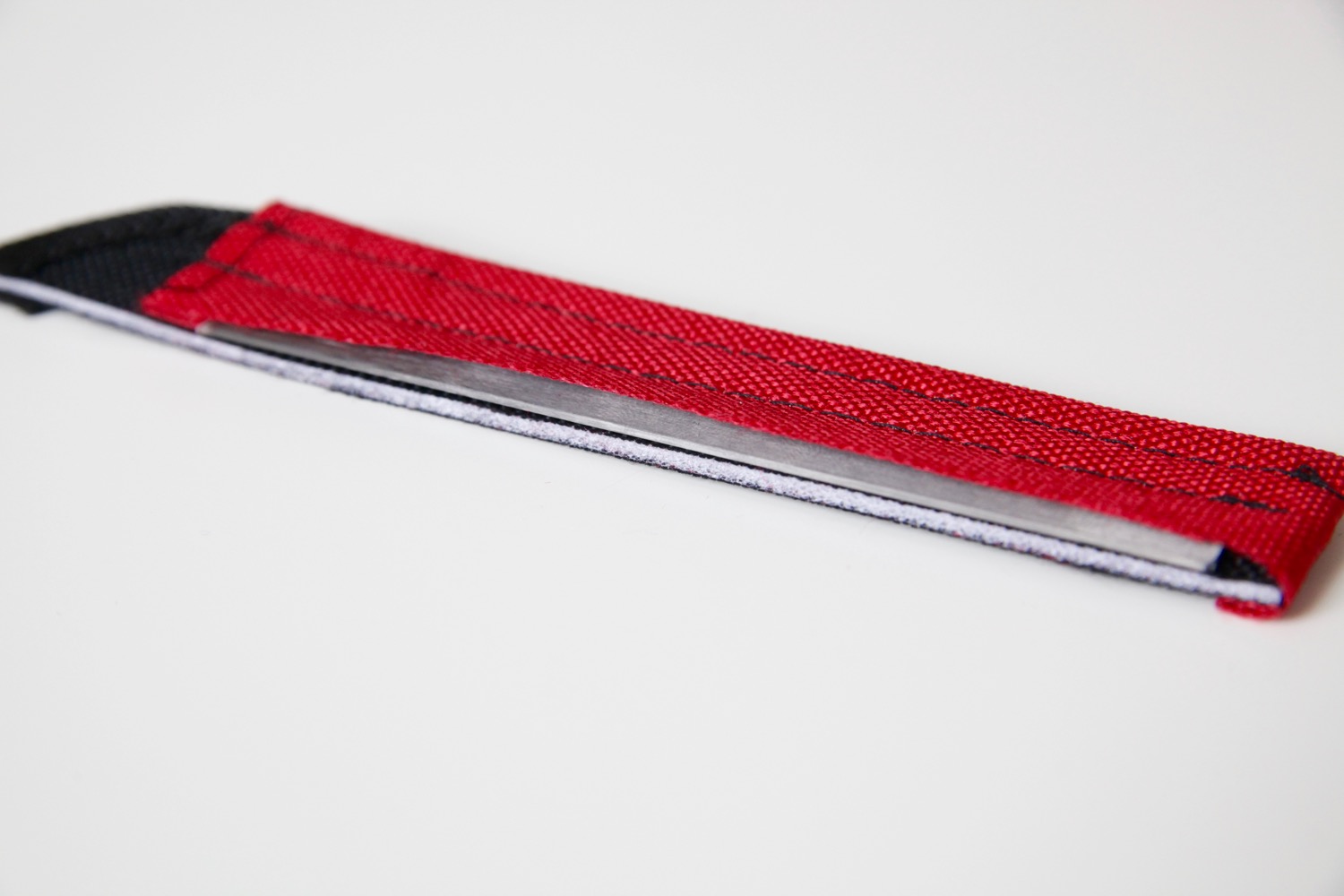
PROs: ability to fix it to the tree during setup, ability to fix the anchor sling
CONs: velcros can't keep the whoopie in place when using saggy lines, unprotected space between carbon plates
DESIGN 4
When introducing design 3, some people's feedback was that the concept may be right but to get it done perfectly we most propably would have to make it even heavier and more bulky. That's why we did exactly the opposite: We designed it smaller, lighter and nevertheless with lots of more tree protection and usability than in version 3
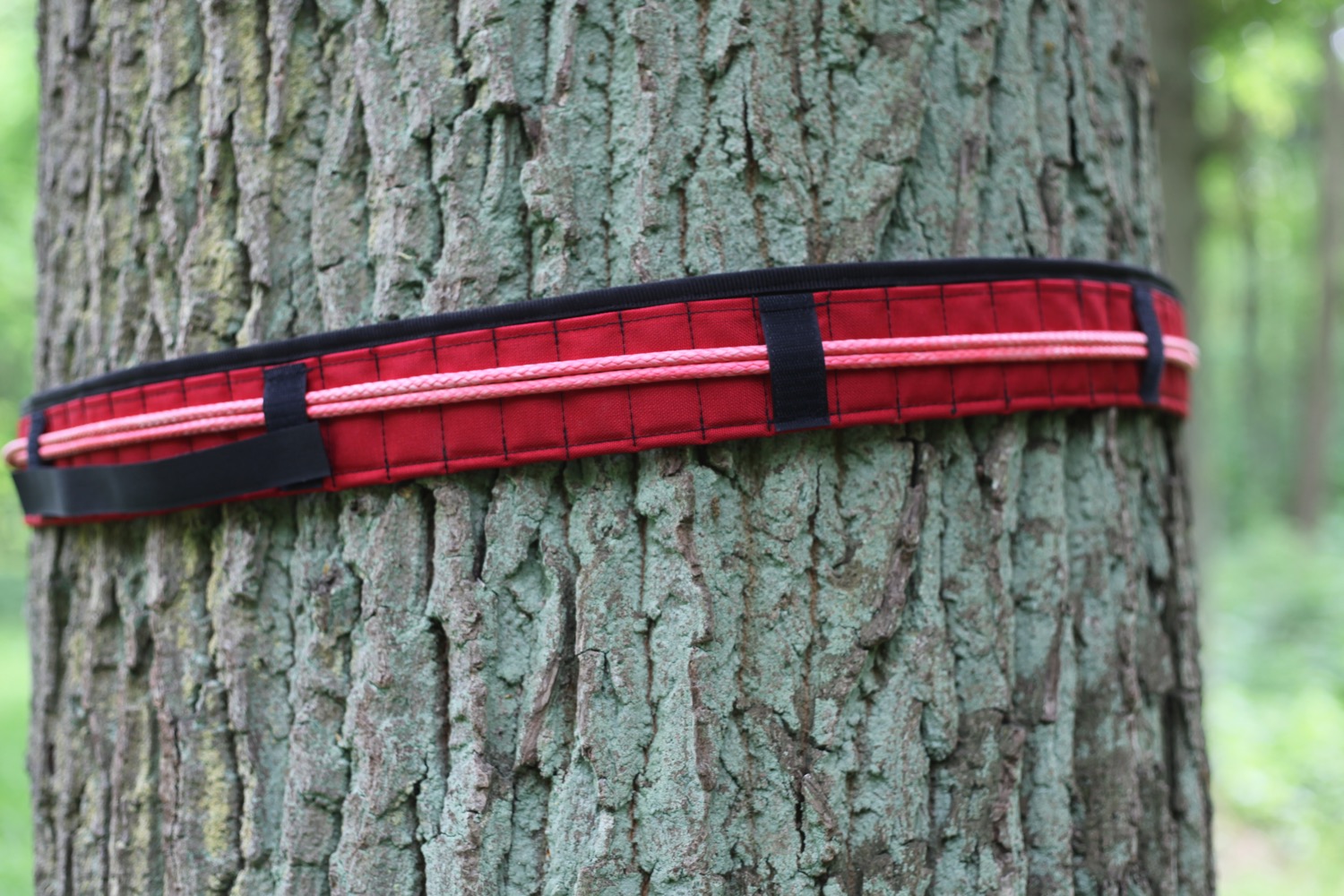
PROs: Same load distribution area like the bulkier versions before, Nearly no unprotected space between carbon plates, memory foam base layer, friction protection by Cordura nylon, velcro straps to attach it to the tree during setup, velcro straps can be threaded with anchor sling for protection against slipping when tensioning saggy,
CONs: velcro straps are too wide, under some circumstances the anchor sling can put pressure below the carbon plates
DESIGN 5
Design 5 is a small but important change of design 4. The pockets for the carbon plates are 15% longer for even more load distribution area and the velcros are attached a little higher on the outside cordura. This prevents the anchor sling to slip below the carbon plates. This makes sure that the anchor sling always lies on the carbon plates for full load distribution.
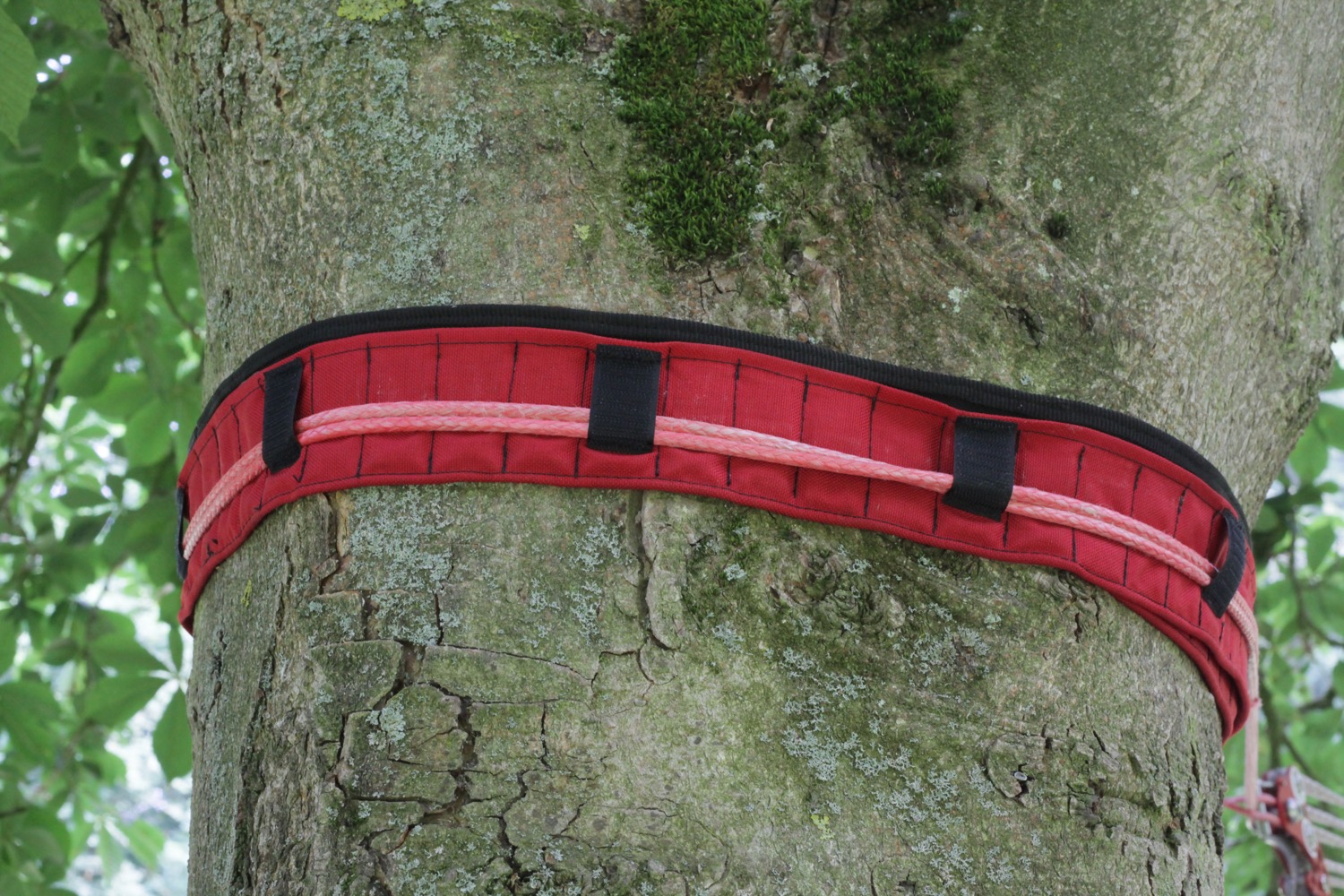
TreePRO is shown here in use in a bad angle configuration. The anchor sling is kept in place by the velcros nevertheless.
PROs: huge load distribution area, nearly no unprotected space between carbon plates, memory foam base layer, friction protection by Cordura nylon, velcro straps to attach it to the tree during setup, velcro straps can be threaded with anchor sling for protection against slipping when tensioning saggy or in bad angle conditions
CONs: no cons known at this moment
Results when using TreePRO
TreePRO design 4 & 5 are in use for some weeks now. We had lots of internal tests. After these tests we were confident to show this update to the public and went to several slackline festivals, like the TüTü-Slack in Tübingen or the Slackline Festival NRW (thanks for the awesome time to both festivals b.t.w.). We believe that most slackers will agree that slackline festivals can be seen as an ultimate gear test. Dozens of slackliners walking, bouncing, jumping around on your gear for many days in a row. That's why we don't want to keep the results of those heavy use installations from you:

The result of 100 m Parsec line with about 3.5 m sag, rigged at Roßberg during the TüTü Slack on a tree with a very wet and therefore soft and moss-covered bark. No visible traces beyond some greener moss because of keeping the bark wet unter the TreePRO. No traces of load, no traces of Dyneema rope in the bark.
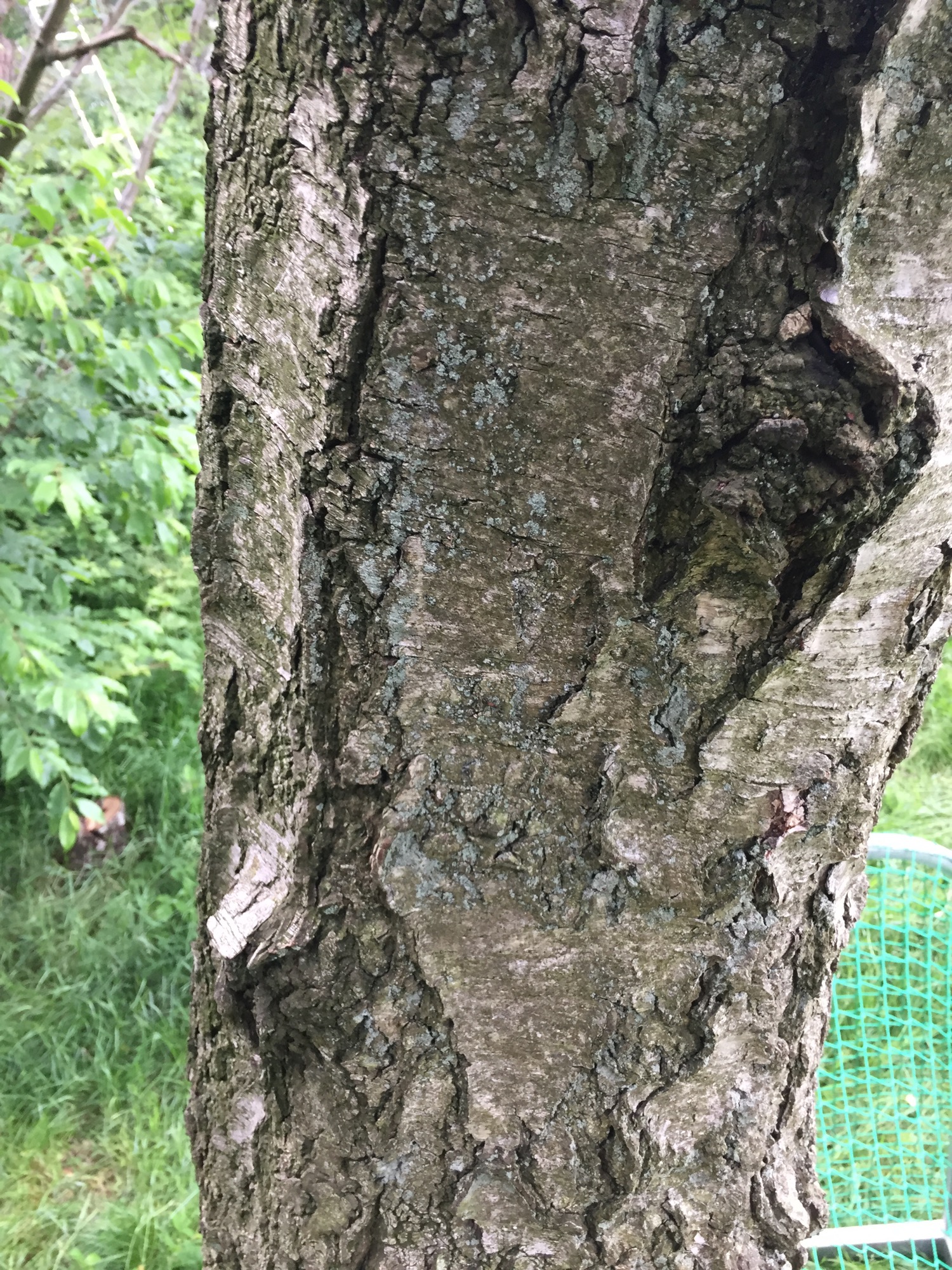
The result of anchor 1 of 70 m Parsec line with 2 m sag, rigged on a birch tree with quite uneven bark at Slackline Festival NRW. Time of load to the tree: 3 days. Visible traces: None
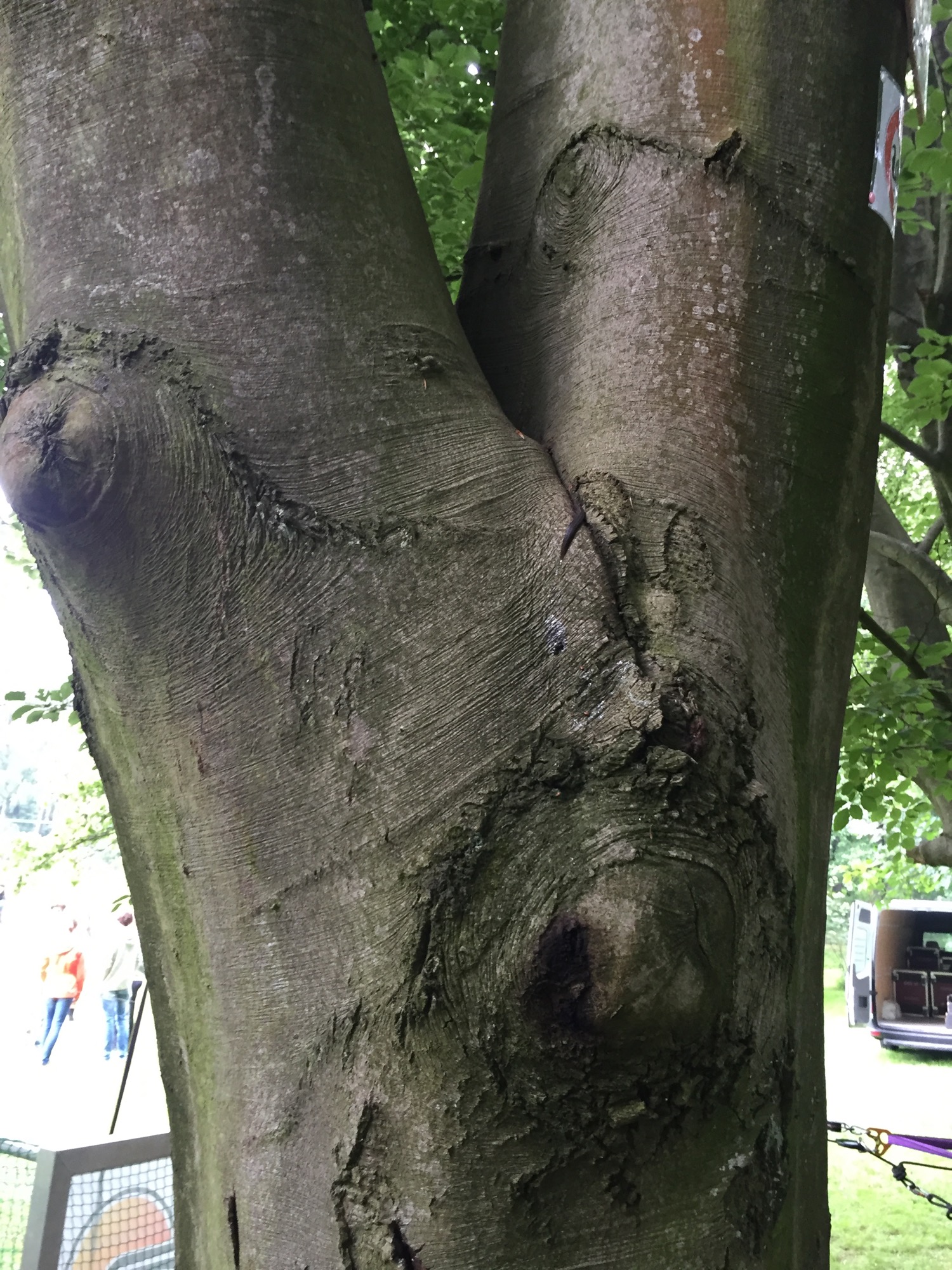
The result of anchor 2 of 70 m Parsec line with 2 m sag, rigged on a beech tree with very even bark at Slackline Festival NRW. Time of load to the tree: 3 days. Visible traces: None
ARE THERE NEUTRAL TESTS OF TREE FRIENDLINESS?
It's official: The International Slackline Association made some very technical and insightful tests to find out about the forces of different slackline anchor slings on trees. They found: Dyneema whoopies don't harm trees if they are used with raed TreePRO, the only carbon fibre reinforced tree protection on the market. The forces even stay below the threshhold of none damaging loads of permanently installed rigs. Read the full study, authored by the International Slackline Association. As the study tested a worst case scenario with a very small diameter tree, we put up some calculations about higher loads you can put on whoopie slings at larger trees without going beyond the threshhold of tree friendliness. These calculations are based on a worst case scenario, so the values will most likely be a little below. But we believe it's worth protecting our trees a little more. So these are the numbers for your orientation:

HOW HEAVY, HOW BULKY IS TREEPRO?
TreePRO weighs 297 grams each. Rolled together it's smaller than a hand. See the pictures:
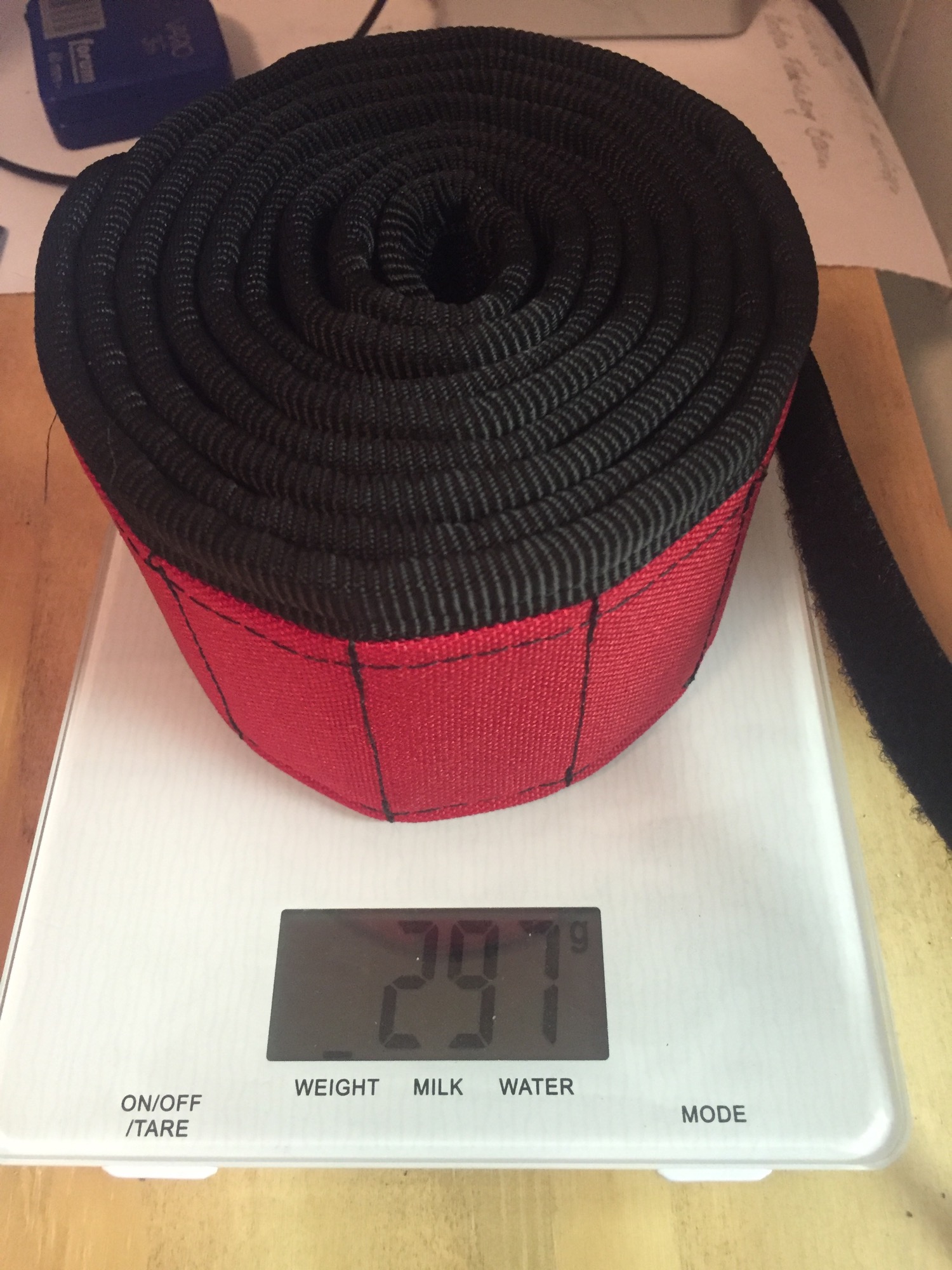
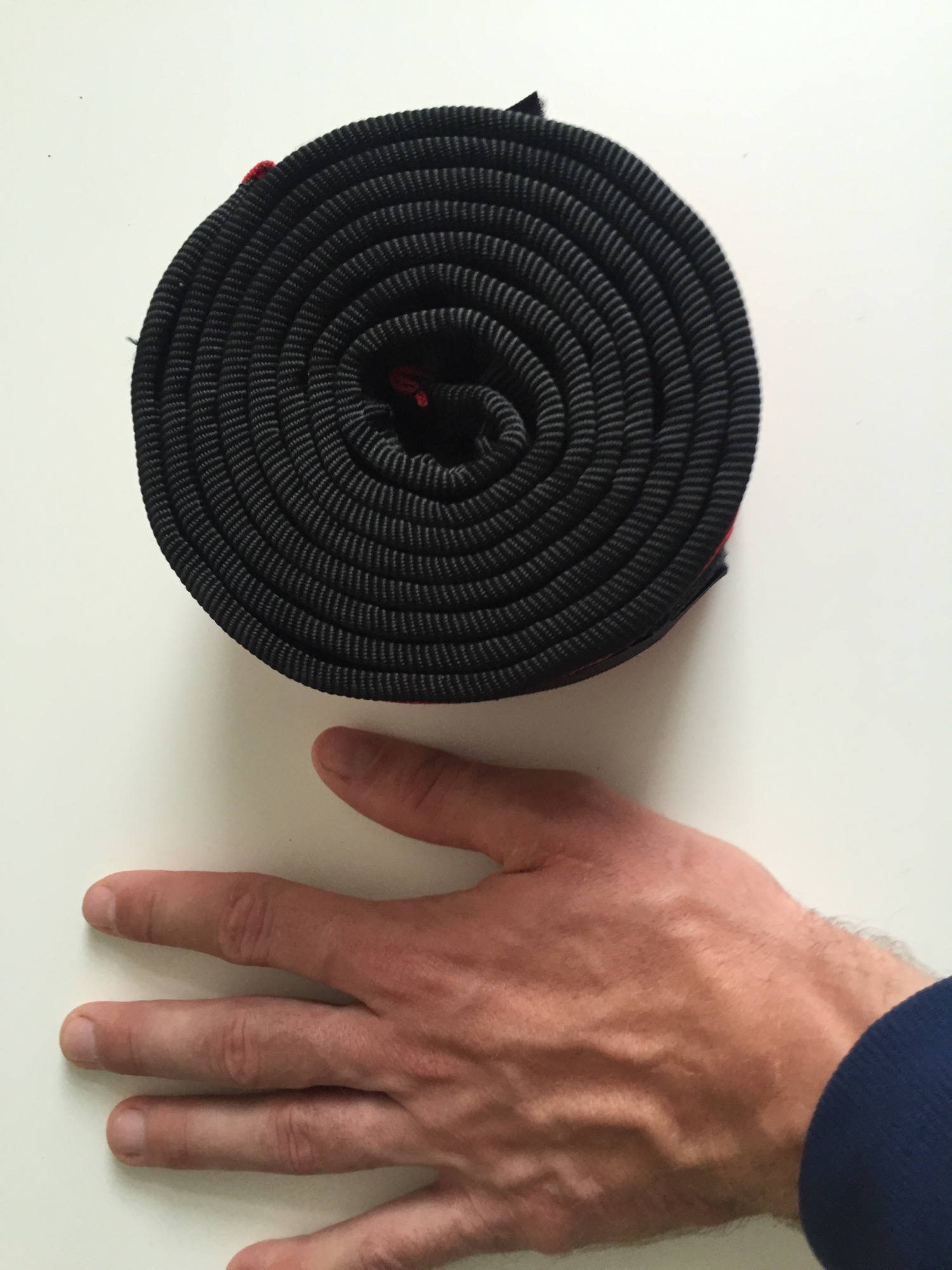
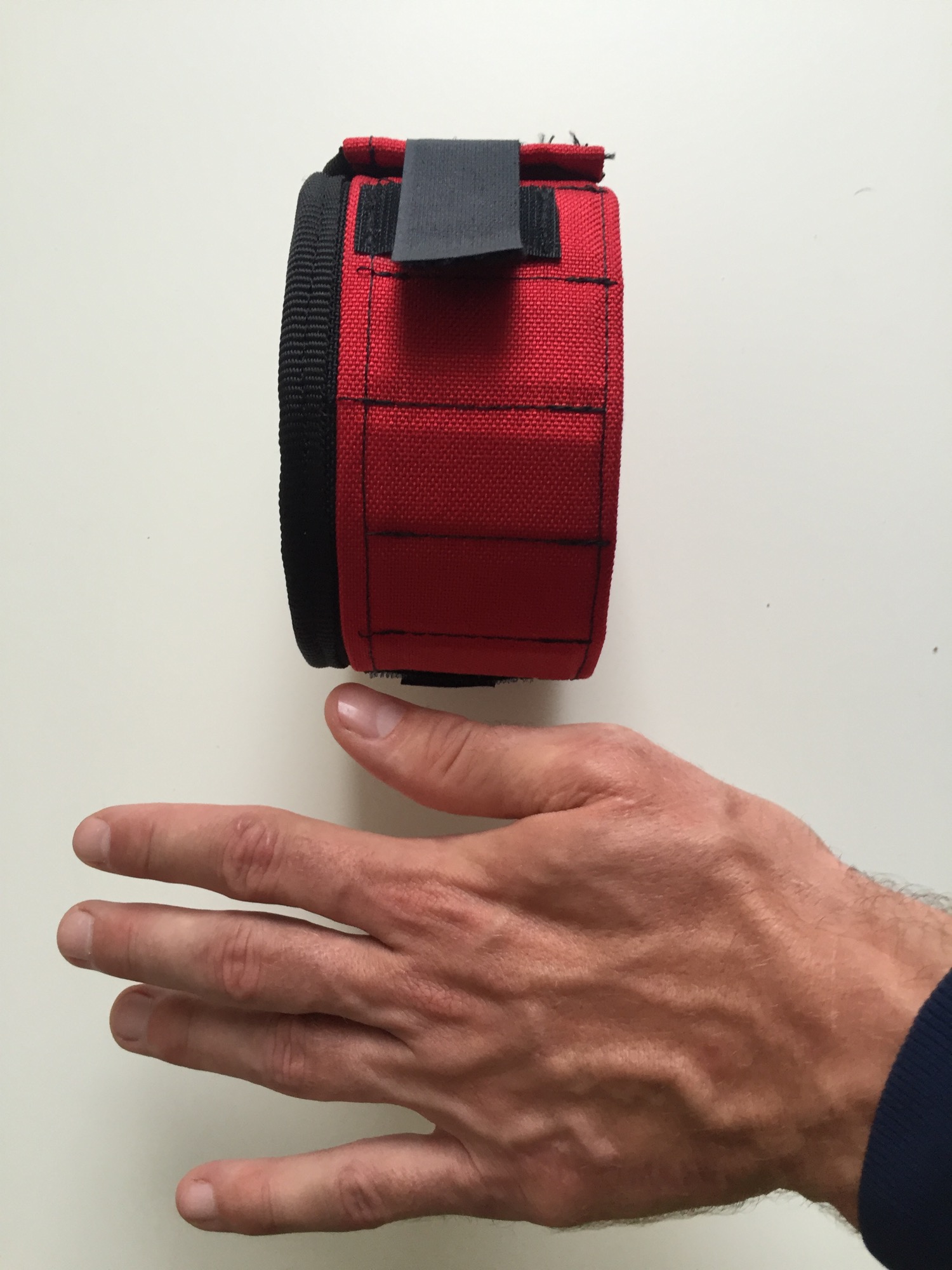
HOW DOES TREEPRO + WHOOPIE COMPARE TO OTHER SLACKLINE ANCHOR SETS?
For our comparison we took the most known longline brands and added the weights of their anchor components: the anchor sling itself plus the treeprotection that is usually sold along. Let's keep it short & simple, these are the results, sorted from lightweight to heavyweight:
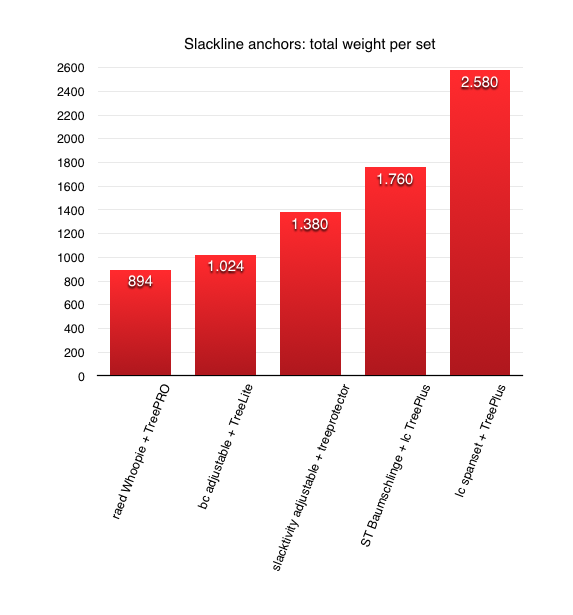
- raed whoopie + TreePRO (894 g per set)
- BC adjustable sling + TreeLite (1024 g per set)
- Slacktivity adjustable sling + Treeprotector (1380 g per set)
- SlacklineTools Baumschlinge + Landcruising TreePlus (1760 g per set)
- Landcruising Spanset + Landcruising TreePlus (2580 g per set)

As you can see, there is a very easy way to save lots of weight in your slackline backpack. The difference between the commonly used combination of spansets / TreePlus and whoopies / TreePRO is more than 1650 grams. Thats the equivalent of a 1.5l water bottle!
So: Get the lightest slackline anchor set available today, protect your trees and and save lots of space and weight in your slackline backpack. It's a win win.
TreePRO by raed slacklines is licensed under a Creative Commons Attribution-ShareAlike 4.0 International License.
Based on a work at https://raed-slacklines.com/treepro

 DEU
DEU
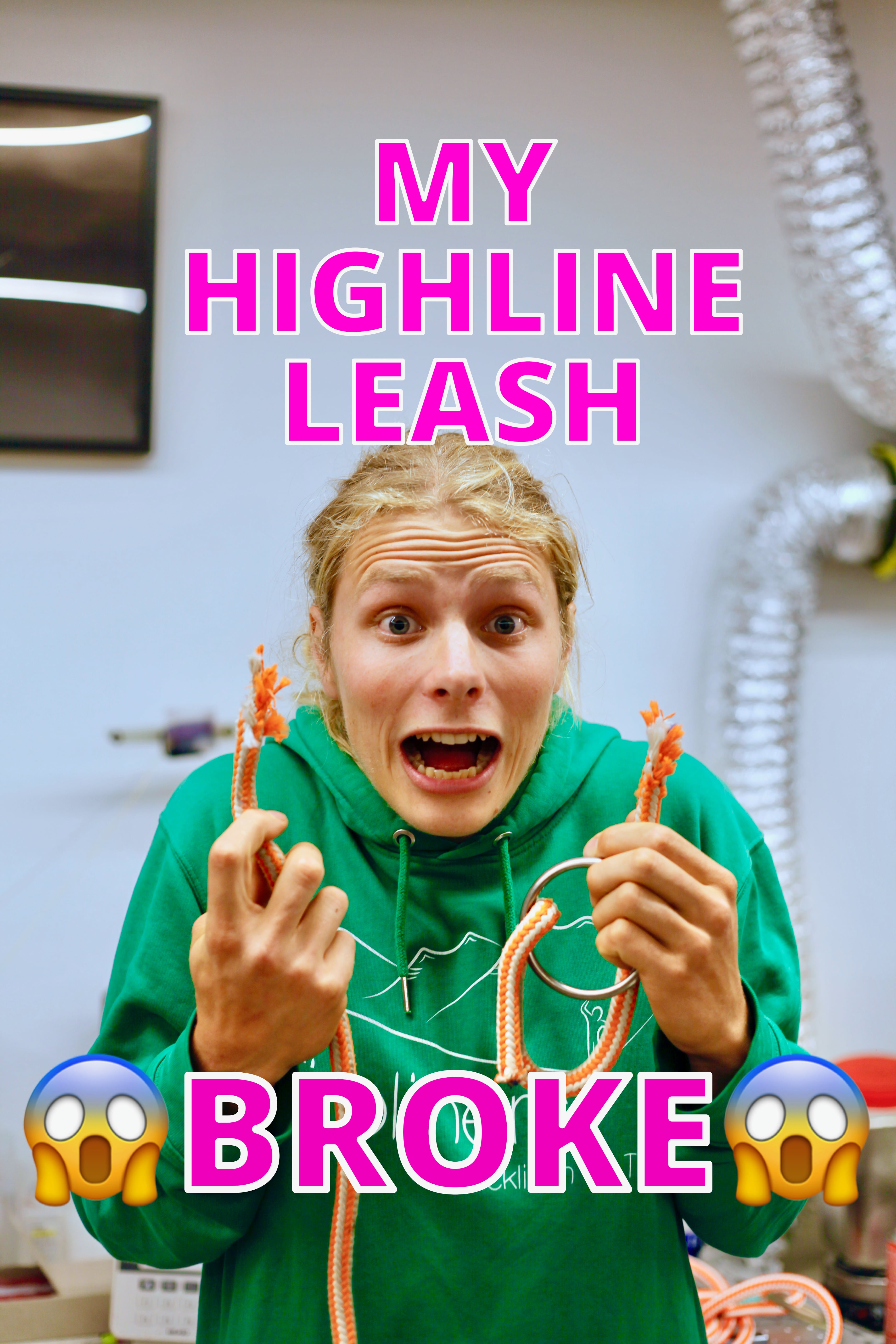

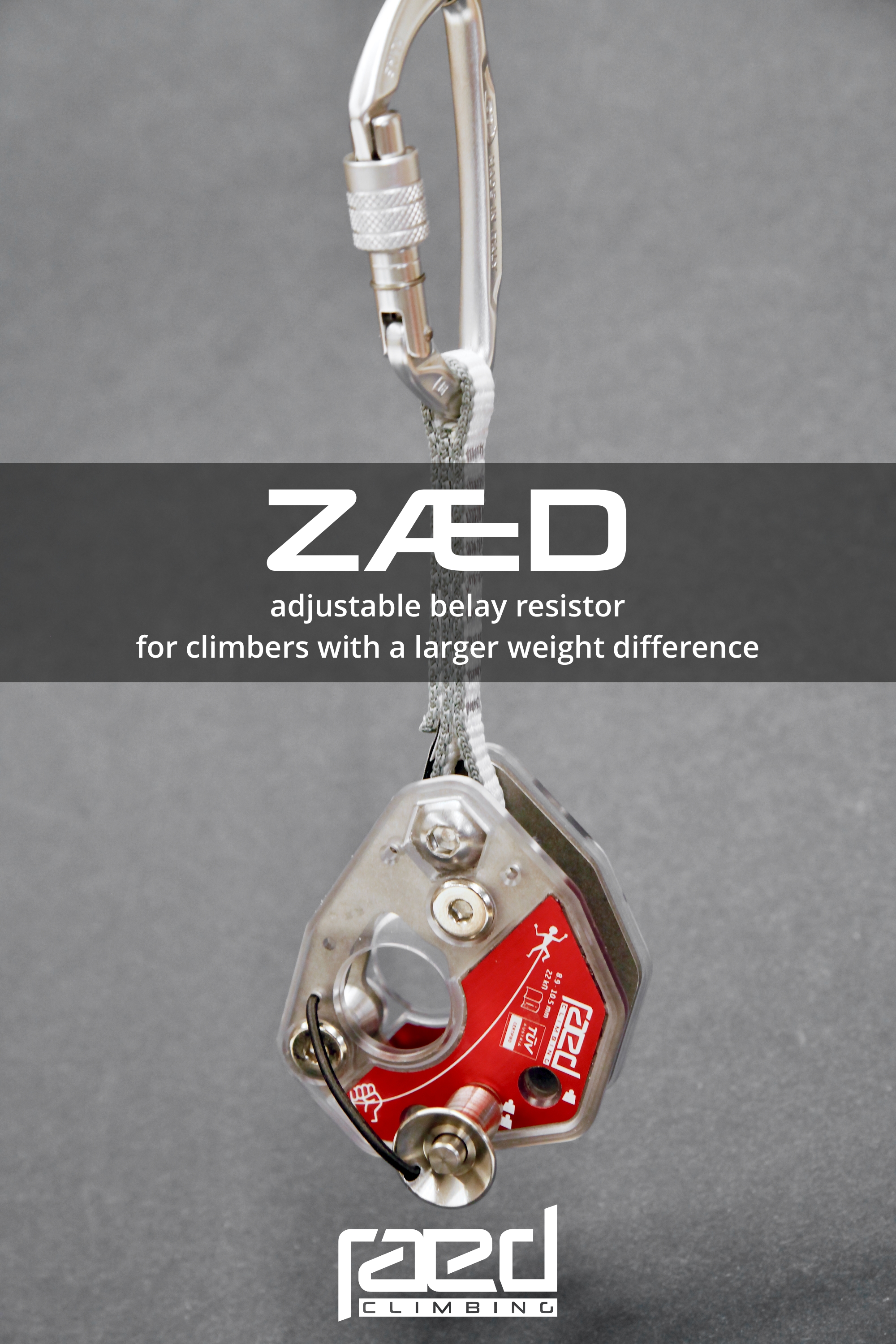
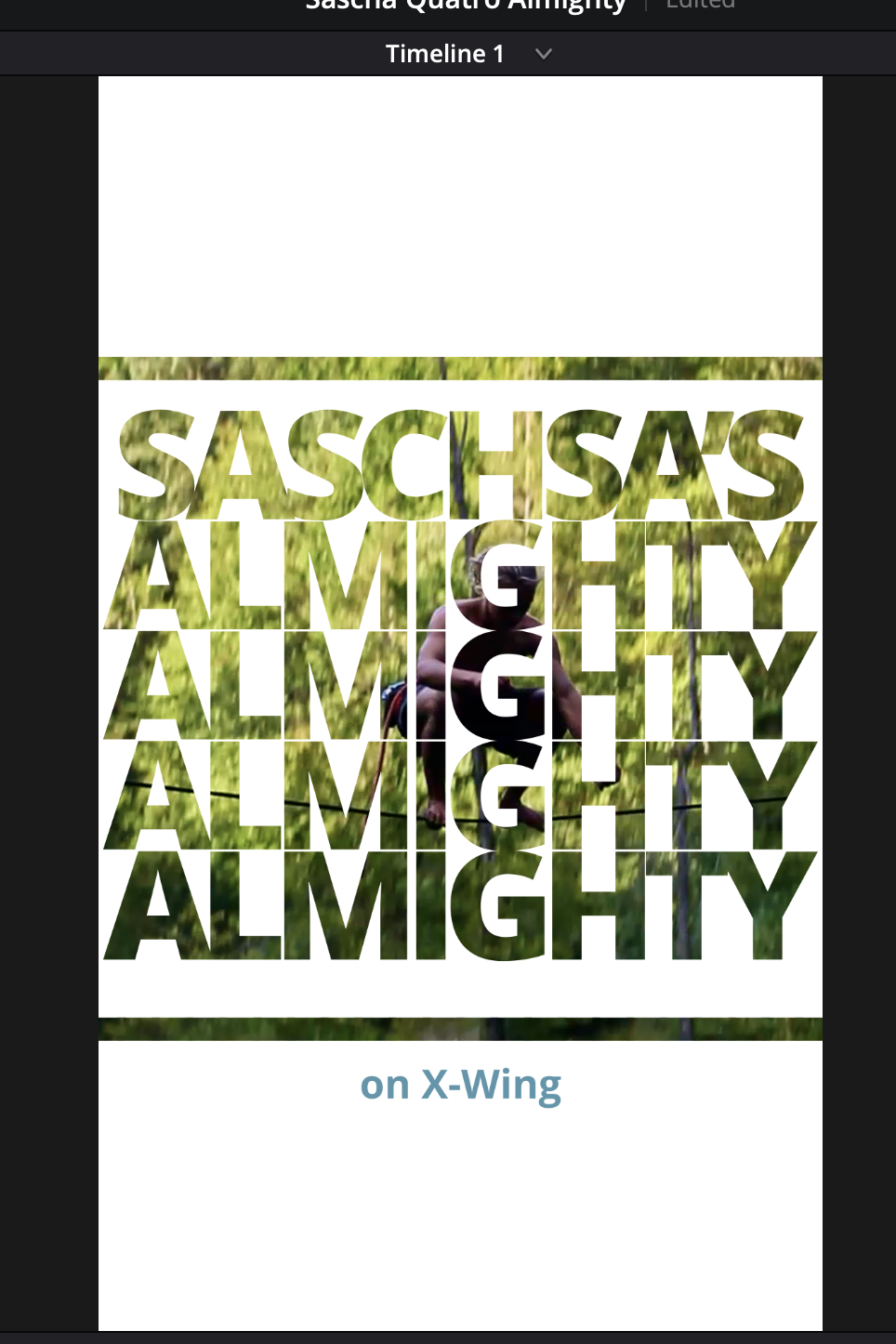

Validate your login
Sign In
Create New Account